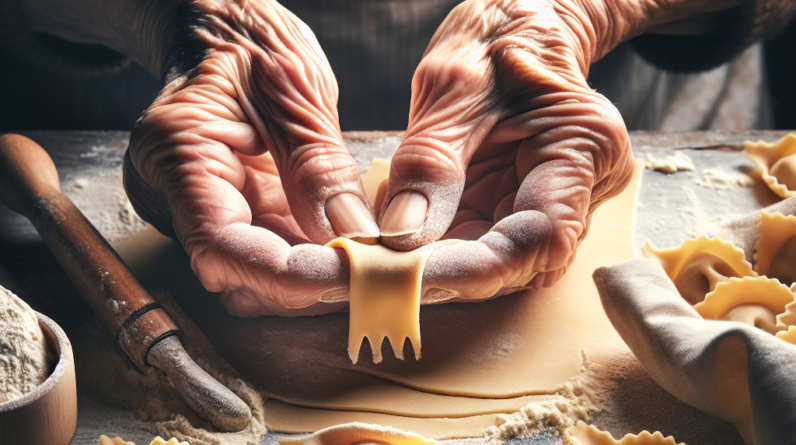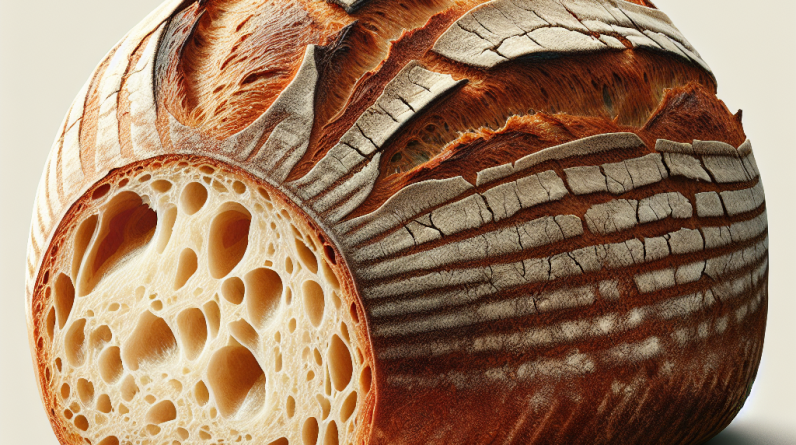In the world of Italian cuisine, wine plays an integral role, enhancing the flavors of traditional dishes and adding a touch of sophistication to every meal. From hearty pasta dishes to vibrant seafood specialties, pairing the right wine can elevate your dining experience to new heights. But fear not, choosing the perfect wine is not reserved for the experts alone. In this article, we will guide you through the art of selecting the right wine for your Italian meals, ensuring that every sip complements every bite. So, let’s embark on a delightful culinary journey, exploring the fascinating relationship between wine and Italian cuisine.
Understanding the Role of Wine in Italian Cuisine
Wine as a Staple in Italian Culture
In Italy, wine plays a pivotal role in everyday life and holds a special place in Italian culture. It is deeply ingrained in Italians’ traditions and is an essential part of their meals and celebrations. Whether enjoyed as an aperitif, during a meal, or after-dinner, wine is seen as a symbol of joy, conviviality, and togetherness. Italians have a long-standing history of winemaking, dating back thousands of years, and their expertise in producing high-quality wines is renowned worldwide.
Enhancing the Flavors of Italian Dishes
One of the key purposes of wine in Italian cuisine is to enhance the flavors of the dishes. Italian cuisine is known for its rich variety of flavors, and wine acts as a perfect companion to bring out the best in each dish. The complex aromas, acidity, and tannins of wine work in harmony with the flavors of the food, creating a delightful sensory experience. The right wine can elevate a simple dish to new heights, adding depth and complexity to the overall taste.
Complementing Regional Italian Cuisine
Italy’s regional cuisine is incredibly diverse and consists of a wide range of flavors and ingredients. From hearty Tuscan dishes to delicate seafood specialties of the Amalfi Coast, each regional cuisine has its own unique character. Wine, being deeply rooted in the regional culture, is carefully chosen to complement and enhance the flavors of these dishes. The geographical and climatic differences across Italy result in a diverse range of wines, each suited to the specific culinary traditions of the region.
Factors to Consider When Choosing the Right Wine
Consideration of Food Pairing
When choosing the right wine for an Italian meal, one of the primary factors to consider is food pairing. The wine should complement and enhance the flavors of the dish, rather than overpowering or clashing with them. Lighter wines, such as white wines or lighter-bodied red wines, are typically paired with lighter dishes such as seafood or pasta with white sauce. On the other hand, full-bodied red wines are often paired with richer meat and tomato-based dishes.
Matching Intensity of Flavors
The intensity of flavors in both the food and the wine should be taken into account when selecting a wine to pair with an Italian dish. If the dish has strong and bold flavors, it is best to choose a wine with enough body and intensity to match. For example, a robust Cabernet Sauvignon or a Sangiovese would pair well with a rich and hearty meat dish. Conversely, if the dish is more delicately flavored, such as a seafood pasta, a lighter-bodied wine like Pinot Grigio or Sauvignon Blanc would be a better choice.
Considering the Primary Ingredients
Another important factor to consider is the primary ingredients used in the dish. Each ingredient has its own flavor profile, and the wine should be chosen to complement and balance those flavors. For example, if the dish contains tomatoes, which are acidic, a wine with higher acidity, such as a Chianti or a Barbera, would work well to complement the dish. The natural sweetness of the tomatoes can be beautifully balanced with the acidity of the wine.
Assessing Regional Wine Pairings
Considering the regionality of both the dish and the wine is also crucial. Certain wines are produced in specific regions of Italy and have been traditionally paired with the local cuisine for centuries. For instance, in Tuscany, renowned for its Chianti and Brunello di Montalcino wines, the local dishes such as bistecca alla Fiorentina (Florentine steak) are best enjoyed with a glass of Tuscan red wine. Exploring the traditional regional wine pairings can offer a deeper understanding and appreciation of Italian cuisine.

Italy’s Famous Wine Regions
Tuscany
Tuscany, located in central Italy, is known as a paradise for wine lovers. It is home to some of Italy’s most famous wines, including Chianti, Brunello di Montalcino, and Vernaccia di San Gimignano. The region’s rolling hills, Mediterranean climate, and diverse terroir result in wines with exceptional character and complexity. Tuscany’s wines are typically elegant, full-bodied, and well-structured, making them perfect accompaniments to the region’s hearty dishes, such as wild boar stew and rich pasta dishes.
Piedmont
Piedmont, situated in the northwestern part of Italy, is renowned for its world-class red wines, most notably Barolo and Barbaresco. The region is characterized by its picturesque vineyards, nestled among the stunning Alps and rolling hills. The noble Nebbiolo grape, with its distinctive tannins and aromatic profile, is the star of these wines, and they pair exceptionally well with Piedmont’s rich and robust cuisine. Traditional Piedmontese dishes like tajarin pasta with truffle sauce and braised beef in Barolo are beautifully complemented by these bold and elegant wines.
Veneto
Veneto, located in northeastern Italy, is famous for its sparkling wine, Prosecco. This lively and refreshing wine is made using the Glera grape and is beloved both in Italy and around the world. Veneto is also known for its Amarone della Valpolicella, a full-bodied red wine made from dried grapes, and Valpolicella Classico, a lighter red wine. These wines pair wonderfully with the region’s cuisine, which includes dishes like risotto with radicchio and seafood pasta.
Sicily
Sicily, the largest island in the Mediterranean sea, boasts a rich history of winemaking that dates back thousands of years. The warm climate and volcanic soils create the perfect conditions for producing unique and vibrant wines. Sicily is known for its Nero d’Avola, a medium to full-bodied red wine, and its refreshing white wines like Grillo and Catarratto. Sicilian cuisine relies heavily on fresh seafood, and these wines beautifully accompany seafood specialties such as grilled swordfish and pasta with sardines.
Campania
Campania, located in southern Italy, is home to iconic wines like Falanghina, Greco di Tufo, and Aglianico. These wines capture the essence of the region’s sunny climate and volcanic terroir. The white wines of Campania, such as Fiano di Avellino and Greco di Tufo, exhibit a beautiful balance of freshness and complexity. They pair exceptionally well with local dishes like spaghetti alle vongole (pasta with clams) and mozzarella di bufala. The region’s red wines, especially Aglianico, are rich and bold, making them a great choice for robust meat dishes.
Apulia
Apulia, located in the southeastern part of Italy, is often referred to as the “heel of the boot.” This region is known for its bold and rustic red wines, such as Primitivo and Negroamaro. Primitivo, which shares a genetic relationship with California’s Zinfandel, produces rich, full-bodied wines with notes of dark fruit and spice. Negroamaro, on the other hand, is an earthy and medium-bodied red wine. These wines pair beautifully with Apulian dishes such as orecchiette with tomato and meat sauce and lamb stew.
Lombardy
Lombardy, situated in northern Italy, is renowned for its sparkling wine, Franciacorta. Produced using the traditional method, similar to Champagne, Franciacorta offers elegance and finesse. The region is also known for its full-bodied red wines, such as Valtellina and Sforzato di Valtellina, made from the Nebbiolo grape. Lombardy’s cuisine often features hearty dishes like risotto alla Milanese and ossobuco, which pair beautifully with these complex and structured wines.
Emilia-Romagna
Emilia-Romagna, located in northern Italy, is a region renowned for its culinary delights, including Parmigiano Reggiano cheese, Prosciutto di Parma, and balsamic vinegar. The region also produces a variety of wines, such as Lambrusco and Sangiovese. Lambrusco is a sparkling red wine with vibrant acidity, making it a wonderful accompaniment to Emilia-Romagna’s rich flavors. Sangiovese, a versatile red grape, produces well-structured wines that pair beautifully with dishes like tagliatelle al ragù and tortellini in brodo.
Friuli-Venezia Giulia
Friuli-Venezia Giulia, situated in northeastern Italy, borders Austria and Slovenia. The region’s proximity to these countries is reflected in its diverse wine styles, influenced by both Italian and Central European winemaking traditions. Friuli-Venezia Giulia produces excellent white wines such as Friulano, Pinot Grigio, and Sauvignon Blanc. These wines, with their crisp acidity and delicate aromas, pair magnificently with the region’s seafood specialties, like grilled prawns and risotto with Adriatic scampi.
Trentino-Alto Adige
Trentino-Alto Adige, located in the northernmost part of Italy, is known for its stunning landscapes and Alpine climate. This region produces a diverse range of wines, influenced by both Italian and German winemaking traditions. Trentino is renowned for its elegant and aromatic white wines, such as Gewürztraminer and Müller-Thurgau, while Alto Adige is famous for producing exceptional Pinot Noir and Lagrein. These wines pair wonderfully with the region’s hearty cuisine, including dishes like canederli (bread dumplings) and speck (smoked ham).
Understanding Italian Wine Labels
Classifications and Designations
Italian wine labels can, at first glance, appear complex and confusing. However, understanding the classifications and designations can provide valuable information about the wine. One of the most common classifications is “Denominazione di Origine Controllata” (DOC), which ensures the wine comes from a specific region and meets certain quality standards. Another classification is “Denominazione di Origine Controllata e Garantita” (DOCG), which represents the highest level of quality and authenticity. It guarantees that the wine has followed strict production regulations and has undergone rigorous tasting and analysis.
Geographical Indications and Controlled Origin
Geographical indications and controlled origin are crucial aspects of Italian wine labels. The label often includes the specific region or sub-region where the grapes were grown and the wine was made. These geographical indications provide insights into the terroir and microclimate, which greatly influence the wine’s character and unique qualities. Some examples of geographical indications include “Chianti Classico” in Tuscany and “Barolo” in Piedmont.
Wine Quality Designations
Italian wines are classified into different quality designations based on factors such as aging, grape variety, and production methods. These designations provide information about the wine’s characteristics and quality. For example, “Riserva” indicates that the wine has been aged for a longer period than usual, resulting in greater complexity and refinement. “Superiore” denotes a wine that meets specific criteria regarding alcohol content, aging, or vineyard elevation.

Popular Italian Wines to Consider
Chianti
Chianti, hailing from the region of Tuscany, is one of Italy’s most famous and sought-after wines. It is made primarily from Sangiovese grapes and can vary in style from light and fruity to robust and full-bodied. Chianti pairs wonderfully with Italian dishes such as pasta with tomato-based sauces, roasted meats, and aged cheeses.
Barolo
Barolo is often referred to as the “king of wines” and holds a special place in the hearts of wine enthusiasts. It is produced in the Piedmont region, primarily from the Nebbiolo grape, and is known for its powerful and complex character. Barolo pairs exceptionally well with rich, hearty dishes such as braised beef, truffle risotto, and aged cheeses.
Brunello di Montalcino
Brunello di Montalcino, another gem from Tuscany, is made exclusively from Sangiovese grapes grown in the Montalcino region. This wine is internationally renowned for its exceptional quality, longevity, and bold flavors of dark fruit, spice, and earth. Brunello di Montalcino is a perfect companion to robust meat dishes, including game meats, as well as aged cheeses.
Prosecco
Prosecco, a sparkling wine from the Veneto region, has gained immense popularity in recent years. Its light and refreshing character, accompanied by vibrant acidity and subtle fruitiness, make it an ideal choice for celebrations or as an aperitif. Prosecco pairs beautifully with light appetizers, fresh seafood, and fruity desserts.
Aceto Balsamico
While not a wine in the traditional sense, Aceto Balsamico, or balsamic vinegar, holds a significant role in Italian cuisine. Produced in the region of Emilia-Romagna, this aged vinegar adds depth and complexity to many Italian dishes, from salad dressings to marinating meats. The intricately balanced flavors of Aceto Balsamico can elevate both savory and sweet dishes.
Barbaresco
Barbaresco, like Barolo, is made from Nebbiolo grapes in the Piedmont region. However, it exhibits a softer and more approachable character in comparison. Barbaresco’s elegant and refined profile pairs excellently with roasted meats, grilled vegetables, and aged cheeses.
Amarone
Amarone, originating from the Veneto region, is a unique and intense red wine made from partially dried grapes. This drying process concentrates the flavors and sugars, resulting in a rich and full-bodied wine with notes of dried fruits, chocolate, and spices. Amarone is a fantastic match for slow-cooked stews, grilled meats, and aged cheeses.
Vermentino
Vermentino is a crisp and dry white wine native to several regions in Italy, including Sardinia and Liguria. It exhibits bright citrus flavors, herbal notes, and refreshing acidity. Vermentino pairs wonderfully with seafood dishes, pasta with pesto sauce, and light salads.
Montepulciano d’Abruzzo
Montepulciano d’Abruzzo, originating from the Abruzzo region, is a versatile red wine loved for its approachable and fruity character. It pairs well with a wide range of Italian cuisine, including pizza, pasta with rich tomato sauces, and grilled meats.
Asti Spumante
Asti Spumante is a sweet sparkling wine made from Moscato grapes in Piedmont. It offers vibrant aromas of fresh fruits and flowers, along with a crisp and effervescent palate. Asti Spumante is commonly enjoyed as a dessert wine and pairs excellently with fruit-based desserts or creamy cakes.
Pairing Wine with Italian Appetizers
Bruschetta
Bruschetta, a classic Italian antipasto, consists of grilled bread rubbed with garlic and topped with fresh tomatoes, basil, and olive oil. This vibrant and flavorful dish pairs beautifully with light and refreshing white wines, such as Pinot Grigio or Vermentino. The crisp acidity and delicate fruity notes of these wines complement the freshness of the tomatoes and the herbal aromas of the basil.
Antipasto Platter
An antipasto platter generally includes a variety of cured meats, cheeses, olives, and marinated vegetables. The diverse flavors and textures call for a versatile wine that can complement a range of ingredients. A light to medium-bodied red wine, such as Chianti or Barbera, provides a wonderful balance to the savory meats and cheeses, while a crisp white wine like Vernaccia di San Gimignano adds a refreshing element to the combination.
Caprese Salad
Caprese salad, a minimalist yet delicious dish, combines juicy tomatoes, fresh mozzarella, and fragrant basil, drizzled with olive oil and a sprinkle of salt. The simplicity of this dish calls for a wine that won’t overpower the flavors. A light and fruity white wine, like a Gavi or a Greco di Tufo, enhances the freshness of the tomatoes and the creaminess of the mozzarella without overwhelming the delicate flavors.
Crostini
Crostini are small, toasted bread slices topped with various spreads or toppings, including pâtés, cheese, vegetables, or cured meats. The versatility of crostini allows for a flexible wine pairing. For crostini with pâté or rich spreads, a medium-bodied red wine, such as a Rosso di Montalcino or a Dolcetto, can stand up to the robust flavors. On the other hand, crostini with fresh vegetables and light cheeses can be enjoyed with a crisp and refreshing white wine, such as Verdicchio or Falanghina.
Fried Calamari
Fried calamari, a popular Italian appetizer, requires a wine that can cut through the richness of the dish and provide a refreshing contrast. A sparkling wine, such as Prosecco or Franciacorta, offers a lively effervescence and crisp acidity to complement the fried calamari. The bubbles cleanse the palate between bites, allowing you to fully enjoy the tender seafood.

Choosing the Right Wine for Italian Pasta Dishes
Spaghetti Carbonara
Spaghetti Carbonara is a classic Roman dish made with pasta, pancetta or guanciale (cured pork jowl), eggs, Pecorino Romano cheese, and black pepper. To balance the richness of the creamy sauce and the savory pancetta, a medium-bodied white wine like Greco di Tufo or Soave is an excellent choice. The wine’s acidity helps cut through the richness, while the floral and fruity notes elevate the flavors of the dish.
Lasagna
Lasagna is a beloved Italian comfort food, consisting of layers of pasta sheets, meat or vegetable filling, and creamy béchamel sauce, topped with melted cheese. This hearty and flavorful dish calls for a medium to full-bodied red wine that can stand up to the richness. A Sangiovese-based wine, such as a Chianti Classico or a Rosso di Montepulciano, complements the robust flavors of the meat and the richness of the cheese.
Penne all’Arrabbiata
Penne all’Arrabbiata is a spicy pasta dish dressed in a fiery tomato sauce, typically flavored with garlic, red chili flakes, and fresh herbs. The bold flavors and spiciness of the dish require a wine that can match its intensity. A medium-bodied red wine with good acidity, like a Barbera or a Nero d’Avola, can stand up to the heat while providing additional depth and fruitiness to the dish.
Fettuccine Alfredo
Fettuccine Alfredo, originating from Rome, features pasta served with a rich and creamy Parmesan sauce. The dish’s creamy texture and delicate flavors call for a wine that won’t overpower the sauce. A medium-bodied white wine like Vermentino or Chardonnay offers a balanced approach, with enough acidity to cut through the richness while complementing the buttery flavors of the sauce.
Ravioli
Ravioli, a staple in Italian cuisine, comprises delicate pasta pockets filled with various fillings, such as cheese, meat, or vegetables, served with a flavorful sauce. The choice of wine depends on the filling and the accompanying sauce. Cheese-filled ravioli, served with a simple butter and sage sauce, pairs wonderfully with a medium-bodied white wine like Verdicchio or a light red wine like Barbera. Meat-filled ravioli, served with a rich tomato-based sauce, can be enjoyed with a medium to full-bodied red wine, such as a Sangiovese or a Valpolicella.
Finding the Perfect Wine for Italian Meat and Poultry
Osso Buco
Osso Buco, a traditional Milanese dish, consists of braised veal shanks in a flavorful tomato and vegetable sauce. The tender meat and rich flavors require a wine that can match its intensity. A full-bodied red wine, such as a Barolo or a Brunello di Montalcino, brings forth the depth and complexity required to complement the dish. The wine’s tannins and structure pair wonderfully with the richness of the braised meat.
Bistecca alla Fiorentina
Bistecca alla Fiorentina, a famous Tuscan dish, showcases a thick-cut T-bone steak, grilled to perfection and seasoned with salt, pepper, and olive oil. The flavors of the grilled steak call for a robust and bold red wine that can stand up to the meat’s intensity. A powerful Sangiovese-based wine, like a Chianti Classico or a Brunello di Montalcino, not only complements the steak’s flavors but also enhances the overall enjoyment of the meal.
Saltimbocca
Saltimbocca, a popular dish from Rome, consists of thinly sliced veal escalopes topped with sage leaves, prosciutto, and cooked in butter and white wine. This dish’s delicate and savory flavors pair impeccably with a medium-bodied white wine like Verdicchio or Greco di Tufo. The wine’s crisp acidity and floral character provide balance and enhance the herbal notes of the sage and the saltiness of the prosciutto.
Chicken Cacciatore
Chicken Cacciatore is a rustic Italian dish that combines braised chicken with tomatoes, onions, bell peppers, mushrooms, and herbs. This flavorful and aromatic dish pairs wonderfully with medium-bodied red wines, such as a Barbera or a Rosso Conero. The wine’s bright acidity and red fruit flavors complement the spices and herbs in the dish, while the mild tannins provide structure and balance.
Pollo al Marsala
Pollo al Marsala, a classic Italian dish, features chicken cooked in Marsala wine sauce, along with mushrooms and fresh herbs. The sweet and nutty flavors of Marsala wine are integral to this dish. When pairing, it is best to choose a wine that matches or enhances the sauce’s sweetness and richness. An aged Marsala wine, preferably a dry or semi-dry version, provides a harmonious pairing, accentuating the flavors of the dish.
Pairing Wine with Italian Seafood Specialties
Lobster Thermidor
Lobster Thermidor, a luxurious and indulgent dish, includes lobster meat cooked in a creamy sauce, typically made with egg yolks, cream, mustard, and wine. The rich flavors and creamy texture of the dish call for a white wine that can provide a refreshing contrast. A full-bodied, oaked Chardonnay or a rich and vibrant Sauvignon Blanc pairs beautifully with the dish, balancing the richness with its acidity and enhancing the flavors of the lobster.
Seafood Risotto
Seafood risotto, a beloved Italian specialty, combines creamy Arborio rice with an assortment of seafood such as shrimp, clams, and mussels. This vibrant and flavorful dish pairs harmoniously with a crisp and aromatic white wine, like a Vermentino or a Vernaccia di San Gimignano. The wine’s freshness and delicate fruity notes complement the flavors of the seafood while balancing the creaminess of the risotto.
Grilled Branzino
Grilled branzino, a Mediterranean delight, showcases a whole fish seasoned simply with herbs, olive oil, and lemon. This light and delicate dish require a white wine that can complement the fish’s flavors without overpowering them. A dry and crisp white wine, such as a Verdicchio or a Gavi, provides a perfect balance, enhancing the fish’s natural flavors and adding a vibrant acidity.
Fritto Misto
Fritto Misto, a popular Italian seafood dish, consists of an assortment of lightly battered and fried seafood, such as shrimp, calamari, and small fish. The crispy textures and delicate flavors call for a wine that can cut through the richness of the fried batter and cleanse the palate. A sparkling wine, like Prosecco or Franciacorta, offers a crispness and effervescence that pairs beautifully with the diverse seafood flavors.
Pasta alle Vongole
Pasta alle Vongole, a classic Italian dish, features linguine or spaghetti tossed with fresh clams, garlic, white wine, and parsley. The briny flavors of the clams and the vibrant freshness of the dish are best complemented by a light and mineral-driven white wine. A Vermentino or a Greco di Tufo provides a complementary and balanced pairing, enhancing the flavors of the seafood and adding a refreshing element to the pasta.
Exploring Wine Options for Italian Desserts
Tiramisu
Tiramisu, a quintessential Italian dessert, consists of layers of espresso-soaked ladyfingers, rich mascarpone cream, and a dusting of cocoa. This indulgent and creamy dessert pairs exceptionally well with sweet wines that can stand up to its robust flavors. A sweet Marsala wine or a Vin Santo provides a lovely complement, with their caramel and nutty notes harmonizing with the coffee and creamy elements of the dessert.
Panna Cotta
Panna Cotta, a silky and creamy dessert, is made by simmering milk, cream, sugar, and gelatin, which sets into a delicate custard-like consistency. This delicate dessert calls for a wine that won’t overpower its subtle flavors. A Moscato d’Asti or a Moscato Bianco offers a delightful pairing, with its gentle effervescence and floral sweetness enhancing the creamy texture and vanilla flavors of the panna cotta.
Cannoli
Cannoli, a beloved Sicilian treat, features crispy pastry tubes filled with a sweetened ricotta and chocolate chip filling. The creamy and sweet flavors of the filling require a wine that can offset the richness and provide a refreshing contrast. A light and fruity red wine, such as a Brachetto d’Acqui or a Lambrusco, offers a lively character and effervescence, amplifying the flavors of the dessert.
Zabaione
Zabaione, also known as zabaglione, is a traditional Italian dessert made with egg yolks, sugar, and a sweet wine, often Marsala. The dessert is gently cooked until it reaches a creamy and velvety consistency, similar to a custard. When pairing wine with Zabaione, it is best to choose a wine that complements its flavors and showcases the wine used in the recipe. A sweet Marsala wine, preferably of the same variety used in the Zabaione, provides a seamless pairing, with its rich and nutty flavors marrying perfectly with the dessert.
Amaretto Cookies
Amaretto cookies, also known as amaretti, are almond-flavored cookies that are crunchy on the outside and chewy on the inside. These delicate and nutty cookies pair wonderfully with sweet wines that can mirror their flavors. A Vin Santo or a Passito di Pantelleria, both displaying rich aromas and notes of dried fruits and almonds, offer a delightful pairing, elevating the nuttiness of the cookies and adding an extra layer of complexity.
In conclusion, wine plays a central role in Italian cuisine, enhancing flavors, complementing regional dishes, and bringing people together. When choosing the right wine for an Italian meal, factors such as food pairing, flavor intensity, primary ingredients, and regional traditions should be taken into consideration. Italy’s famous wine regions, each with their unique terroirs and grape varieties, offer a wide range of options to explore. Understanding Italian wine labels and their classifications can further aid in making informed choices. Whether enjoying Italian appetizers, pasta dishes, meat and poultry, seafood specialties, or desserts, there is a perfect wine pairing to elevate the culinary experience and celebrate the rich tapestry of Italian flavors.










